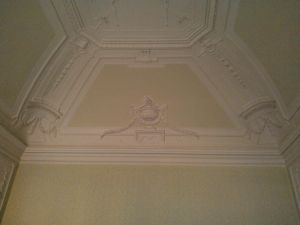Palace of one of Sanremo's noble families
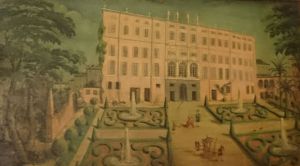 The palace was built from 1720 onwards by the noble Roverizio family, originally from the nearby village of Ceriana, who were given the title of Count of Roccasterone (a feud in the hinterland of Nice) in 1722 by the first King of Sardinia, Vittorio Amedeo II, on land situated along the ancient Via Imperiale (today's Via Palazzo), which in the meantime had become the main axis of the new building expansion of the city.
The palace was built from 1720 onwards by the noble Roverizio family, originally from the nearby village of Ceriana, who were given the title of Count of Roccasterone (a feud in the hinterland of Nice) in 1722 by the first King of Sardinia, Vittorio Amedeo II, on land situated along the ancient Via Imperiale (today's Via Palazzo), which in the meantime had become the main axis of the new building expansion of the city.
The Palazzo originally had gardens at the back that stretched down to the sea with fountains and various arrangements of grassy lawns and hedges, and as time went by these also underwent various changes.
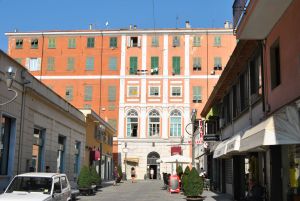 In 1842 Count Stefano Roverizio di Roccasterone, in order to create a link with the Piano district as an alternative to those represented by today's Via Cavour, Via Massabò and Via
In 1842 Count Stefano Roverizio di Roccasterone, in order to create a link with the Piano district as an alternative to those represented by today's Via Cavour, Via Massabò and Via 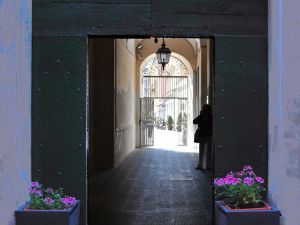 Corradi, offered the Municipality the possibility of opening up a large square in the gardens at the back of his palace, also in order to set up a local market, and to create a passage through the atrium in order to connect Via Palazzo with the "via Traversa" which was being developed at the time (the one that would become Via Nuova and later Via Vittorio Emanuete, today's Via Matteotti).
Corradi, offered the Municipality the possibility of opening up a large square in the gardens at the back of his palace, also in order to set up a local market, and to create a passage through the atrium in order to connect Via Palazzo with the "via Traversa" which was being developed at the time (the one that would become Via Nuova and later Via Vittorio Emanuete, today's Via Matteotti).
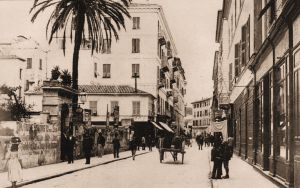
The proposal was then accepted by the City Council, which had already provided for the square in the urban development plan drawn up in 1840 by engineer Francesco Verdese.
At the end of the 19th century, it was still possible to see the wall delimiting the gardens with the entrance gate on Via Vttorio Emanuele, flanked by two columns.
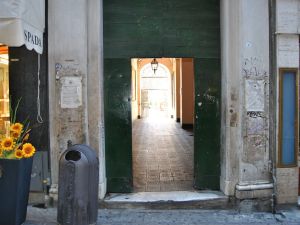 When the gardens and the square disappeared and were replaced by today's Via Escoffier and the buildings facing it, the passage leading to Via Palazzo remained open and is still called by the people of Sanremo "u pòrtegu sgarbu", or "the perforated door", a definition already used for the door of the palace in Via Montà, the former seat of the Commercial
When the gardens and the square disappeared and were replaced by today's Via Escoffier and the buildings facing it, the passage leading to Via Palazzo remained open and is still called by the people of Sanremo "u pòrtegu sgarbu", or "the perforated door", a definition already used for the door of the palace in Via Montà, the former seat of the Commercial 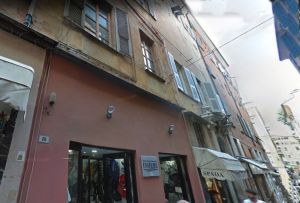 Court.
Court.
The main façade looks like a simply plastered surface without any particularly noticeable decoration and with windows made in a sharp shape.
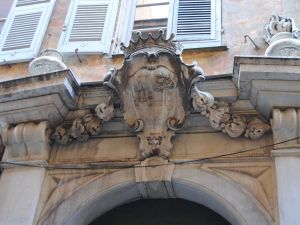 The large portal facing Via Palazzo is surmounted by the marble family emblem of the Counts Roverizio, who were related to the Della Rovere family of Savona, who gave the Church two popes, Sixtus IV and Julius II.
The large portal facing Via Palazzo is surmounted by the marble family emblem of the Counts Roverizio, who were related to the Della Rovere family of Savona, who gave the Church two popes, Sixtus IV and Julius II.
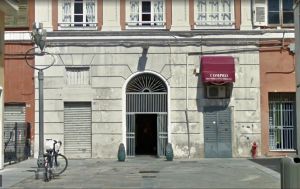 The passage from Via Palazzo to Via Vittorio Emauele became a spacious staircase atrium towards the rear of the building, whose rear façade, corresponding to the access on today's Via Escoffier, was architecturally improved with the construction of overlapping orders of pilasters. Modern exterior painting has hidden the character of its 18th-century origins.
The passage from Via Palazzo to Via Vittorio Emauele became a spacious staircase atrium towards the rear of the building, whose rear façade, corresponding to the access on today's Via Escoffier, was architecturally improved with the construction of overlapping orders of pilasters. Modern exterior painting has hidden the character of its 18th-century origins.
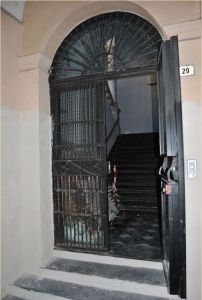
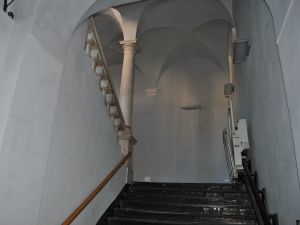
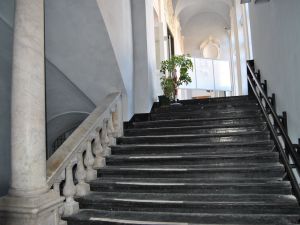 The portico leads to the main floor of the palazzo via a series of steps and a small doorway which, via two flights of stairs with black
The portico leads to the main floor of the palazzo via a series of steps and a small doorway which, via two flights of stairs with black 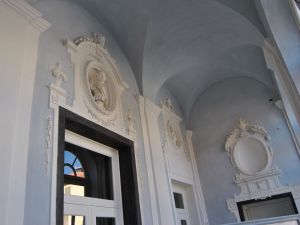 marble steps and decorated supporting columns, leads to the entrance hall on the floor, with a bust in a niche above the entrance door, stucco decorations on the walls and over which the high windows open, which, together with the Doric order pilasters, give impetus to the southern façade of the Palazzo.
marble steps and decorated supporting columns, leads to the entrance hall on the floor, with a bust in a niche above the entrance door, stucco decorations on the walls and over which the high windows open, which, together with the Doric order pilasters, give impetus to the southern façade of the Palazzo.
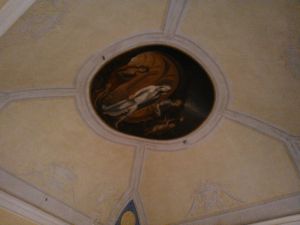
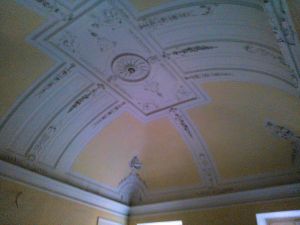 The interior of the palace is enriched by a fine altar and several cycles of paintings made between the 18th and 19th centuries, including the neoclassical fresco of Orpheus bringing Eurydice from beyond the grave on the vault of a drawing room, another fresco depicting the Triumph of Bacchus and a 17th-century Crucifix by Sarzana.
The interior of the palace is enriched by a fine altar and several cycles of paintings made between the 18th and 19th centuries, including the neoclassical fresco of Orpheus bringing Eurydice from beyond the grave on the vault of a drawing room, another fresco depicting the Triumph of Bacchus and a 17th-century Crucifix by Sarzana.
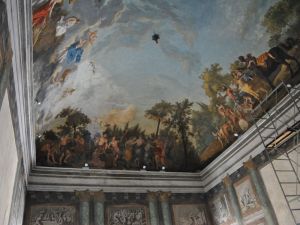 Other rooms and halls are richly decorated with walls and vaults, and frescoes.
Other rooms and halls are richly decorated with walls and vaults, and frescoes.
At the beginning of the last century, the building was sold and partly used as a school and partly as private flats.
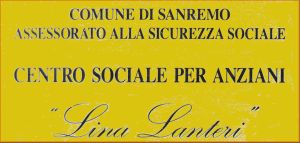 Today, the building houses the 'Lina Lanteri' municipal social centre for the elderly.
Today, the building houses the 'Lina Lanteri' municipal social centre for the elderly.
(Photos: texts by Andrea Gandolfo and others; images from private archives)





